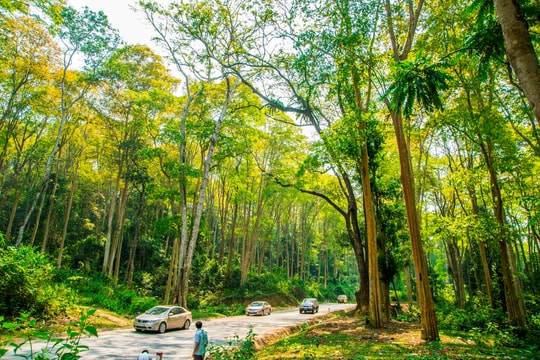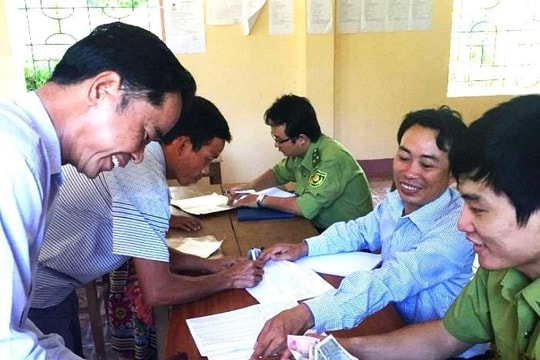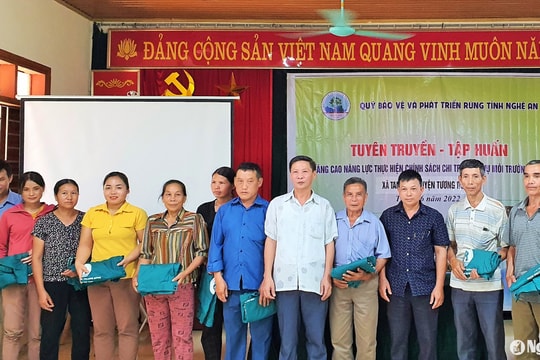Developing planted forests associated with wood processing industry
(Baonghean) - Nghe An currently has forestry land accounting for 70% of the province's natural area. The goal in the period 2015 - 2020 is to build a comprehensively developed forestry sector in a modern, sustainable direction, with large-scale commodity production creating certain advantages in forestry economic development.
Getting rich from the forest
The family of Ms. Vi Thi Ha, Na Bon village, Tien Phong commune (Que Phong) has nearly 10 hectares of hilly land. While clearing the ground cover for 4-month-old acacia trees, Ms. Ha excitedly said: Previously, this land was left empty, while the couple had no jobs, all year round they went into the forest to pick bamboo shoots, looking for forest products to sell for daily expenses, the family's life was therefore makeshift, with no food or savings. In 2010, the family cooperated with other families to plant raw material forests on this entire area. After 6 years of care, at the end of last year, the family harvested the first crop of acacia trees, earning hundreds of millions of dong. Excited by the large sum of money, never thought that the family would take back all the land to replant the forest, following the State's support policy. After receiving seedlings and fertilizer from the Pu Hoat Nature Reserve Management Board, Ms. Ha's family started planting forests. After planting, the forests were carefully fenced, not allowing buffaloes or cows to enter. Therefore, after only 4 months, the acacia trees were nearly 1 meter high.
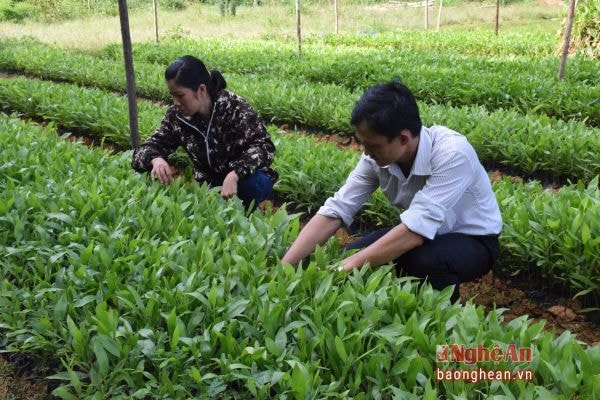 |
| Caring for forestry seedlings at Pu Hoat Nature Reserve Management Board. |
Mr. Vo Trong Cuong's family, hamlet 4, Nghia Hanh commune (Tan Ky), focuses on planting large timber forests. With 6 hectares of hilly land, 7 years ago he planted acacia trees, xoan dau, lat, xa cu... now the tree trunks have reached a diameter of nearly 20 cm, but he has not exploited them, but left them for many years to make construction wood. Mr. Cuong said: Construction wood is becoming increasingly scarce, so when the tree trunks reach 30 - 40 cm, they are harvested, the economic value is many times higher than that of raw material forests.
| The province currently has 145,526 hectares of timber plantations; the unforested land under the production forest planning is 166,745 hectares. This is a great potential for developing timber plantations to serve the needs of processing planted forest wood in the province. |
In the past 2 years, the Management Board of Pu Hoat Nature Reserve has actively promoted afforestation, which has received positive responses from local people. With investment from the 147 Forest Planting Project, in 2015, the unit planted more than 700 hectares of Acacia mangium forest; in 2016, from the State Forest Protection and Development Project, the unit received 500 hectares of forest, of which 360 hectares were planted in the first phase. Currently, ethnic people are preparing to dig holes and plant the remaining land area of 140 hectares this year. The Management Board of Pu Hoat Nature Reserve has prepared enough seedlings to supply to people for timely planting.
Link between factory and forest planters
In recent years, the raw wood processing industry in the province has been quite developed. Currently, the province has 45 wood processing enterprises, 11 paper and pulp production enterprises, in addition, there are more than 7,361 individual production and trading establishments of wooden furniture and wood products.
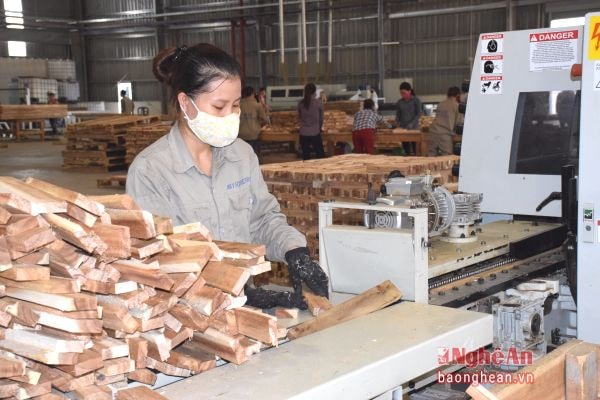 |
| Production of laminated wood for export at Nghe An MDF Wood Processing Factory. |
To ensure their raw material sources, most of the plantation wood processing factories have policies to support forest growers and purchase wood. Nghe An MDF Wood Processing Factory (May Forestry Joint Stock Company) specializes in producing laminated wood and MDF products for export. In phase 1, the factory's capacity is 13,000 m3 of laminated wood and 130,000 m3 of MDF/year, so each year the factory needs a very large amount of raw wood. Mr. Le Van Kiem - Deputy Director of the factory, said: The plan is that by September 2016, the factory will officially produce the main products of MDF and laminated wood for export. Currently, the province has planned the raw material area for the factory with 42,000 hectares of forest land, in the districts along National Highway 7 and National Highway 48. Of which, the majority of the forestry land has been allocated to the people, so the factory has created a policy mechanism for people to develop the forest in a stable manner. That is, providing 100% of seedlings, fertilizers, and termite killers to forest owners, with the goal of increasing the output of planted forest wood to 150 - 180 tons/ha.
Proactive supply of forest materials
To proactively supply, the planning of concentrated raw material areas for the wood processing industry is identified as a top priority, creating favorable conditions for wood processing factories in the area to operate stably, proactively sourcing input and output materials for the factory. Currently, the province has about 170,000 hectares of production forests, the main tree species are hybrid acacia, acacia mangium and a few are acacia auriculiformis. According to the plan, in the coming time, the expansion of planted forest areas for the wood processing industry will be focused on, contributing to increasing the province's forest cover to 50% by 2020.
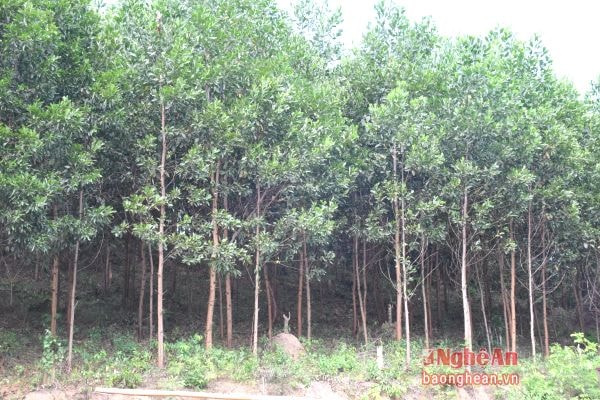 |
| Acacia forest in Que Phong. |
| Nghe An strives to export products processed from planted forest wood to reach 80 million USD (in 2016), 130 million USD (in 2020), 170 million USD (in 2025) and 200 million USD (in 2030). |
In the coming time, with the current plantation wood processing factories and new construction investments in Nam Cam industrial parks, Hoang Mai town, Thanh Chuong, Anh Son, Nghia Dan..., the capacity to consume plantation wood raw materials reaches about 2.7 million m3/year, plus the demand for wood for the production of other products such as: Wood for the production of handicrafts, household wood, interior and exterior furniture..., the demand for plantation wood raw materials in the province in 2020 will need about 1.7 million m3; in 2025, about 2.5 million m3 and in 2030 about 3 million m3. To meet the output of plantation wood for the coming years, our province sets a target of having over 210,000 hectares of plantation forest for raw materials by 2020; By 2025, there will be 257,000 hectares of raw material forests and by 2030, there will be over 283,000 hectares of raw material forests.
Xuan Hoang


